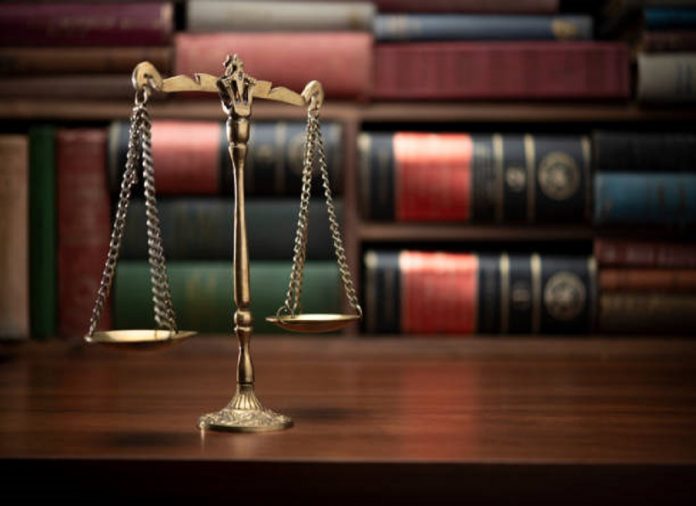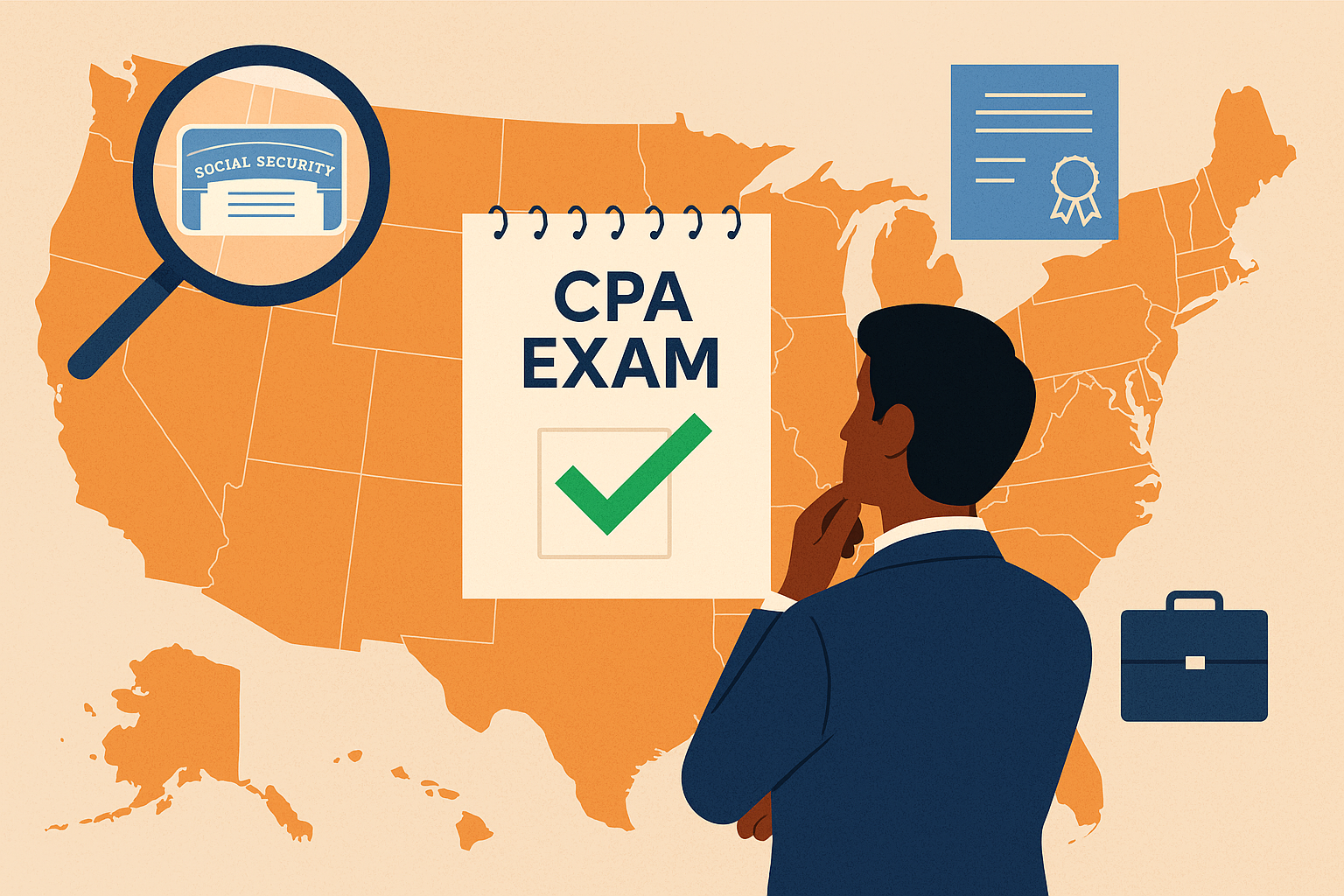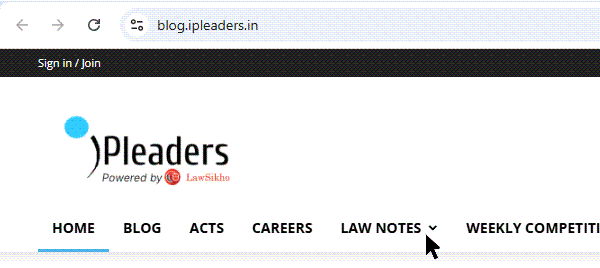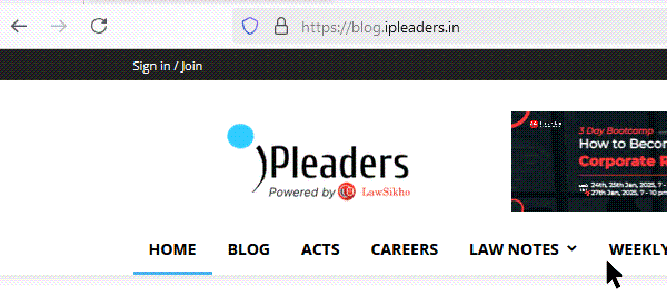This article is written by Sharen Joel pursuing Diploma in General Corporate Practice: Transactions, Governance, and Disputes from LawSikho.
Table of Contents
Introduction
Schools are a vital part of our society that teach the younger generation and provide them with safe grounds to study and flourish. However, if there is a school failure due to any negligence, discrimination, or other forms of misconduct, then students, parents, or even staff members may have to bear severe consequences. Thus, in such a scenario, legal action might be called for against the school.
Are you looking for a lawyer to sue a school? You are at the right place. This article discusses what kind of a lawyer you can approach to sue a school. If you or a loved one has been hurt as a result of the action (or inaction) of a school, obtaining the right attorney is your first step to regaining justice. This article provides a closer look at who, among lawyers, can sue schools, why a case can be filed, and what plaintiffs should know to help substantiate their cases.
The Indian legal structure for educational institutions is multi-layered, consisting of numerous central and state laws. In this regard, one must tread with caution, more so when one intends to contemplate litigation against schools. This would include the Right of Children to Free and Compulsory Education Act, 2009 among other regulations, outlining the rights of students and parents, forming a basis for possible legal claims against the educational institutions.
Constitutional rights of students and parents
There are many Constitutional provisions under which Indian students and their parents enjoy the rights of equality and the right to education, such as:
- Article 21-A: Mandate free and compulsory education for children aged 6-14.
- Article 29(2): Prohibits denial of educational institution entry.
- Article 30: Protects Minority Educational Institution Rights.
- Article 38: Promotes Social Welfare.
- Article 46: Promotes education for backward classes.
These can lead to discrimination lawsuits, unsuitable educational infrastructure, and rights violations. Hence, it will demand legal knowledge and an understanding of the rights. Litigation against schools can bring many challenges. First, the process may be subject to bureaucratic delays. It is even more complicated by laws related to education and defence mechanisms for public institutions through the principle of sovereign immunity.
Knowing what kind of a lawyer can sue a school matters. Not all lawyers deal with such cases because they may entail very subtle areas of law. These may include civil rights cases, personal injury cases, or even education laws. This article is designed to determine under what conditions schools can be sued. Find out lawyers who specialise in that practice and what to watch before filing the case.
Types of school-related legal issues
Schools navigate a complex legal landscape that impacts students, teachers, and administrators. Understanding these legal challenges is crucial for maintaining a safe, fair, and supportive educational environment.
Physical harm and negligence
The claims based on physical harm typically occur in cases of the following:
Playground accidents
Due to unsafe play equipment and inadequate supervision. The school will be held responsible if a student or an employee suffers from an injury due to lack of safety or negligence.
Failure to implement safe measures
If there is a failure to maintain safe environments, injury might occur, which is not safe for the students, as it is their right to play in a safe environment.
Medical negligence
Such incidences occur when schools don’t offer adequate medical attention during emergencies.
Emotional and psychological damages
Claims related to emotional distress may be:
Bullying incidents
Schools may be liable if they fail to address bullying effectively. Schools must provide a safe environment for students. Where schools do not act against bullying or harassment, leads to emotional or physical damage.
Discrimination
Schools must ensure that the student and employee environment is free from discrimination. The most common reason for filing a lawsuit against a school is the violation of civil rights. These include discrimination based on race, ethnicity, gender, disability, or religion.
Mental harassment
Students were subjected to undue pressure or stress resulting from an action by a school administration.
Sexual harassment cases
Allegations of sexual harassment are serious and must be addressed through prompt legal action.
Academic and administrative disputes
Some general cases under these heads would include:
Unfair expulsion
This is a situation where the expulsion of a student is done under unjust or arbitrary circumstances. Students who face such actions may seek legal help.
Grade manipulation
Allegation based on unfair grading practices or academic assessment.
Denial of special needs accommodation
An educational institution must provide necessary accommodation to children who have some disabilities. Failure in this can result in legal action.
Violation of admission policies
This is the situation where institutions do not follow their published admission criteria which leads to potential legal challenges.
Identifying the right legal specialist
After understanding the legal basis for suing a school, the next thing is what type of lawyer specialises in your case. Here are some major types of lawyers who help with school-related lawsuits.
Education law attorneys
Education lawyers deal primarily with laws governing schools, students, and educational institutions. They can handle cases such as:
- Disputes arise when accommodation is required for students with disabilities or special needs.
- Violation of student rights under the Constitution, such as freedom of speech or expression.
- School discipline cases wherein suspension or expulsion was unjust or unfair.
Child right lawyers
Child rights lawyers have been crucial in advocating and protecting the rights of children in India. They work under both the national and international legal frameworks that give account to the vulnerability that is associated with children’s conditions and the need to ensure that there are some special protections accorded to them. Their work includes:
Litigation
Represents children or their guardians in court cases where child rights are violated, for example, through abuse, neglect, or discrimination.
Legal aid
The protection is accorded to their children by legal aid while families cannot fight on their behalf.
Education and awareness
Educating the public as well as schools and local authorities on children’s rights.
Civil litigation experts
Civil rights lawyers specialise in school-related cases that have violated rights under the Constitution or federal protections. Some common examples are:
- Racial or gender-based discrimination.
- Failure to accommodate students with disabilities.
- Religious discrimination or violations of the Fundamental rights.
Legal framework and protective legislations
India has established a sound legal framework to protect children’s rights by providing safety, education, and welfare. It is supported by a plethora of laws and constitutional provisions, which, together, have the objective of safeguarding children from exploitation and abuse.
Right to Education Act (RTE)
The Right to Education Act, of 2009 has made free and compulsory education a fundamental right for children between the ages of 6 and 14 years. The act aims at removing barriers to education so that every child can access quality schooling. It further highlights the need for inclusive education, especially for disadvantaged groups, which strengthens the state’s commitment to the rights of children to education as essential for child development.
Juvenile Justice Act
The Juvenile Justice (Care and Protection of Children) Act, 2015 is the foundation of Indian child protection legislation. Under this act, a thorough framework has been established with regard to the care and protection of children in conflicts with law or those that require care and protection due to involvement in or predisposition to offences. Thus, the best interest principle is always kept at the forefront while establishing procedures and handling cases involving juveniles, providing rehabilitation rather than punishment.
POCSO Act
Protection of Children from Sexual Offences (POCSO) Act, 2012 is particularly created to prevent the sexual assault, harassment and exploitation of children. In this, the rigorous law against offenders and the creation of special courts for fast delivery of judgments for these cases are created. During an investigation or trial of cases, child-friendly procedure ensures that dignity is provided throughout the process of delivering legal judgments.
Persons with Disabilities Act
The Rights of Persons with Disabilities Act, of 2016 ensures equal opportunities for children with disabilities in education and social participation by requiring schools to take inclusive educational practices and accommodations for children with disabilities to support a rights-friendly learning environment.
Constitution provision for child protection
- Article 15(3): The Article allows the state to make special provisions for children.
- Article 21: Recognizes the right to life and personal liberty, including the right to a life dignified.
- Article 39(e) & (f): The state is directed to ensure that children are not abused or exploited and that childhood is protected against neglect.
- Article 45: Early childhood care and education shall be provided to all children until the completion of six years of age.
Preliminary steps before filing a lawsuit
A school can be walked to the court by an individual through a very multifaceted mechanism. This includes the steps:
Documentation process
The pre-litigation processes must be completed before litigating against a school or educational institution. Here is the documentation process before the lawsuit process:
Incident reports
Detailed report about any incident that makes it necessary to file legal action.
Medical records
Record of injuries sustained and medical care obtained.
Witness statements
Accounts from witnesses who saw the incident or can corroborate what happened.
Communication history with school administration
Any record of communication regarding complaints made or issues raised with school officers.
Gathering evidence
Gathering evidence is essential to have a solid case. These may be medical records, injury photographs, copies of disciplinary reports, and other communications with school officials. The lawyer will help you determine what documents you need.
Evidence collection strategies
Efficient evidence collection is part of a strong case presentation:
Digital evidence collation
Collect relevant case emails, messages, and social media posts.
Professional investigation techniques
If possible, engage professionals in investigations that may yield additional evidence.
Keeping good records
It will make access to the same easier during court procedures.
Financial considerations
In some cases, a court may direct the school to pay for the plaintiff’s legal expenses, including an attorney’s fee and litigation costs. This is particularly true for cases of civil rights violations or special education disputes under federal laws.
Understanding the cost implications of pursuing legal action is also important:
Legal fee structure
Lawyers can charge either on an hourly basis or on a flat fee basis; understanding the costs before can be useful in planning.
Government support mechanisms
Some government support programs provide financial aid for legal representation in child protection cases.
Pro bono options
Various attorneys provide pro bono for cases of child rights violation.
Legal aid available
Legal aid facilities exist in the form of many NGOs and government-led efforts to help those incapable of hiring a lawyer for the case.
Potential legal outcomes
The consequences of a lawsuit against a school may be very different.
Compensation claims
Compensatory damages are those which aim at compensation for actual losses and harm sustained. These damages can also be broken down into two categories, i.e., economic damages, on the one hand, and non-economic damages, on the other. The victims may seek reparation for damages caused based on negligence or abuse.
Institutional reforms
Lawsuits might bring about reform in policies or practices adopted by the school to guarantee safety.
Criminal proceedings
The cases of serious misconduct might be presented in criminal court against a person. Punitive damage entails an award given in cases where the actions of the school in question were particularly egregious, reckless, or malicious. As a result, these damages aim to punish and deter such actions by an institution from ever continuing in the future.
Examples of punitive damage situations include:
- Deliberate discrimination or harassment by school officials.
- Volitional violations of Fundamental rights.
- Extreme negligence of a student.
Disciplinary actions
Depending on findings from court proceedings, school authorities can sanction the institutions. The nature of recoverable compensation and damages is a critical element for any claimant planning to sue a school. These are normally grouped into compensatory damages, punitive damages, and equitable relief. Each mainly serves its purpose of ameliorating the effects caused by the school’s actions or failures. Which damages recoverable depend on the case type, evidence, and the respective jurisdiction’s law to handle the case.
Emotional and psychological readiness
Institutions of legal action can be mentally challenging; thus, there is a need for preparation.
Counselling assistance
The professionals can help the families build resilience in managing the legal process-related stress
Building coping skills
Strategies for building resilience in being a family can be created to strengthen the support network.
Managing legal stress
Mindfulness or other stress management techniques might be used to reduce anxiety throughout the litigation process.
Children with trauma
Some may require special support related to the trauma they experienced when they were at school.
Alternate dispute resolution methods
Alternate Dispute Resolution can provide faster and less adversarial solutions to school-related disputes.
Mediation processes
A neutral third party facilitates discussions between parties to reach an agreement.
Negotiation strategies
Sometimes, direct negotiations between parties can solve disputes without formal litigation.
Out-of-court settlements
Many cases are settled before reaching court through negotiated agreements.
Arbitration mechanisms
In arbitration, a neutral arbitrator makes binding decisions on disputes outside of court.
Long-term effects and implications
Litigation against schools has direct and indirect effects on both the short-term and the long-term:
Effects on child’s future
Litigation can impact the child’s educational path as well as his or her mental health.
Public awareness
Publicised cases can increase public awareness about systemic problems in schools.
Institutional responsibility
Litigation can hold schools responsible for their policies and practices.
It can set crucial precedents in future cases related to child rights due to victorious litigation.
Conclusion
Suing against a school is an elongated process in which an attorney specialising in schools could help, right through to civil rights lawyers, personal injury lawyers, employment attorneys, or general litigators. A case of such nature draws on many complex legal aspects to be identified: a legal perspective on the cause, acting quickly, and gathering evidence are key to winning a school case. Visiting the right, competent lawyer would make the school responsible and, therefore, justice-enabled, not just for oneself but also for children or another directly victimised by the institution.
Frequently asked questions (FAQs)
- How long does a typical school lawsuit take in India?
Average duration: 2-5 years, depending on case complexity and court procedures.
- What are the initial costs involved in filing a school lawsuit?
The initial cost involves the structure: legal consultation: ₹5,000 – ₹25,000, filing fees: ₹1,000 – ₹10,000 and additional investigation costs.
- Can I sue a school anonymously to protect my child’s identity?
Partial anonymity is possible, court-approved confidentiality measures, and minor’s identity protection protocols.
- What evidence is most crucial in school-related lawsuits?
There are many crucial pieces of evidence related to school lawsuits, such as medical reports, witness statements, official communication records, and psychological assessment documents.
- Are government schools easier or more difficult to sue?
It involves complex procedural requirements and additional bureaucratic challenges with sovereign immunity considerations.
- What is the success rate of school-related lawsuits in India?
It varies by case type. Approximately 35-45% successful resolution and higher success with comprehensive documentation.
References
- https://bloominjurylaw.com/news/what-kind-of-lawyer-do-i-need-to-sue-a-school/#:~:text=Civil%20Rights%20Lawyer,to%20ensure%20justice%20is%20served.
- https://www.legalasap.com/general/what-kind-of-lawyer-do-i-need-to-sue-a-school/
- https://www.blgwins.com/what-kind-of-lawyer-do-i-need-to-sue-a-school/
- https://www.wikihow.com/Sue-a-School
- https://www.centreforchildprotection.org/constitutional-provision/
- https://ijnrd.org/papers/IJNRD2408393.pdf
- https://crlt.umich.edu/gsis/p1_6
- https://www.ojp.gov/pdffiles1/ojjdp/book2.pdf
- https://hls.harvard.edu/wp-content/uploads/2022/08/Childrens-Law-Guide.pdf
- https://www.haqcrc.org/child-rights/indian-laws-policies
- https://www.researchgate.net/publication/6398906_Legal_Liability_The_Consequences_of_School_Injury
 Serato DJ Crack 2025Serato DJ PRO Crack
Serato DJ Crack 2025Serato DJ PRO Crack










 Allow notifications
Allow notifications



